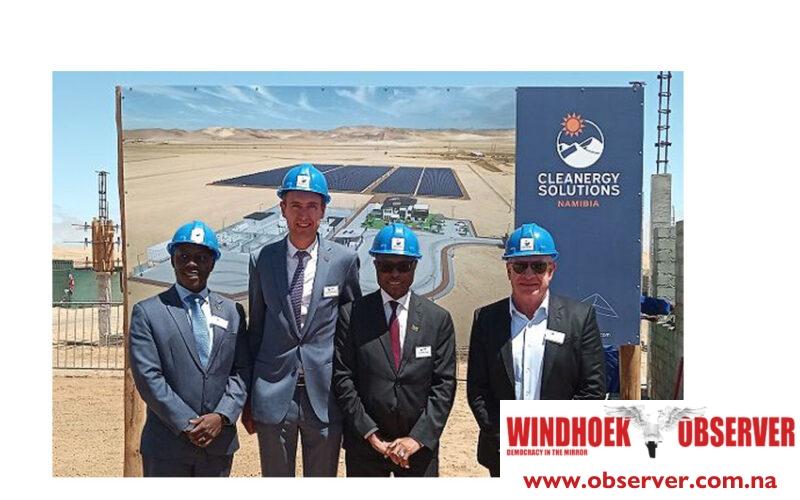Niël Terblanché
The discovery of oil as well as the much-anticipated production of green hydrogen will necessitate an overhaul of the existing energy export and import infrastructure at Namibia’s ports.
This became increasingly more evident when Walvis Bay became the site of Africa’s first green hydrogen production plant.
The new plant entered its construction phase during a recent groundbreaking ceremony at Walvis Bay and represents a monumental stride towards sustainable development and green industrialization in Namibia.
The ambitious Cleanergy Solutions Namibia project, with an investment of approximately N$3.5 billion, is a collaboration between the country’s largest private conglomerate, Ohlthaver & List Group (O&L), and Belgium-based hydrogen powerhouse, CMB.TECH.
Alexander Saverys, the chief of CMB.TECH said the hydrogen production plant will capitalize on solar power to produce hydrogen on-site.
Once in production, the facility is set to fuel trucks, port, and railway equipment.
Saverys added that besides the production facility, a hydrogen academy with a vision to enlighten and train locals about hydrogen technology and its extensive applications will be founded as a part of the initiative.
Sven Thieme, Chairman of O&L, stressed the uniqueness of Cleanergy’s approach, which revolves around its solar power plant sprawling across 10 ha. This is complemented by a hydrogen production unit armed with a 5 MW electrolyser and a 5 MWh battery.
“By harnessing solar energy directly from the plant to produce hydrogen, which is then made available at a public fuel station, we’re pioneering a method unseen in Africa,” he said.
Thieme foresees it as a bedrock for economic growth, indigenous expertise, and vast local employment opportunities.
“Our collective passion is geared towards fostering a sustainable future. Through this plant, fuel station, and training centre, we aim to validate the viability of hydrogen production locally and nurture the competencies essential to maintain this nascent industry,” he said.
Iipumbu Shiimi, the Minister of Finance and Public Enterprises stated that the potential of Namibia’s abundant renewable energy resources, particularly in coastal areas, open doors for Namibia not only to be energy self-sufficient but to emerge as a significant clean energy exporter, potentially to the European Union.
“Our green hydrogen strategy aligns perfectly with our goals to slash carbon emissions and spur economic growth, making Namibia a significant figure in the global green hydrogen landscape,” he said.
Beyond being an industrial marvel, the project promises substantial socio-economic dividends.
This initiative traces its origins back to the Namibian government’s 2021 plea for championing clean industries. The joint enterprise between O&L Group and CMB.TECH was born in response. While O&L significantly contributes to Namibia’s GDP, CMB.TECH is globally renowned for its innovative hydrogen-based marine and industrial solutions.
Adding another dimension to the renewable energy narrative, the Namibian Ports Authority has already signed a Memorandum of Understanding (MoU) with the Port of Rotterdam. This partnership is primed to devise a supply chain blueprint to export the gas produced by the hydrogen endeavour.
Plans are also afoot to strengthen the Port of Walvis Bay’s infrastructure to buttress the burgeoning energy sector.
Andrew Kanime, the Chief Executive Officer of Namport, revealed a massive $2.1 billion private investment blueprint for the proposed port expansion, set to commence in the last quarter of next year and reach completion within three years.
The port of Lüderitz is also included in the new development and expansion plans.
According to Kanime, the development of the secondary port will not unlock the eventual production of newly discovered oil resources but it will create additional market gateways for South Africa’s Northern Cape region.
Following recent enormous oil and gas discoveries in the Orange Basin by petroleum giants Shell and Total Energies, experts expect Namibia to become Africa’s fifth-largest oil producer by 2030.




